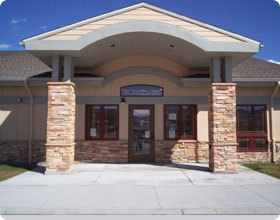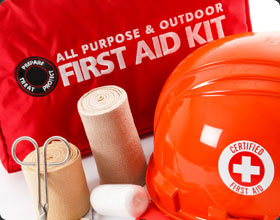Horseback Riding Safety
 Do your kids spend a lot of time around horses? Johnson County Safe Kids is a great source for vital information that will keep them safe when they ride. We recommend Safety Equipment Institute (SEI) certified equestrian headgear. You must also make sure your kids practice proper safety etiquette when handling horses.
Do your kids spend a lot of time around horses? Johnson County Safe Kids is a great source for vital information that will keep them safe when they ride. We recommend Safety Equipment Institute (SEI) certified equestrian headgear. You must also make sure your kids practice proper safety etiquette when handling horses.
Following are some tips on how to be safe while still having fun with horses:
Riding
- Until you know your horse, confine your riding to an arena or other enclosed area
- When your horse is full of energy, exercise him on a long line or in an enclosed area until he is settled and calm
- When trail riding, never ride off until all riders in your group are mounted
- Ride abreast or stay a full horse’s length from the horse in front of you to avoid the possibility of you or your horse getting kicked
- If your horse becomes frightened, remain calm, speak to him quietly, steady him and give him a chance to overcome his fear, then ride or lead the horse past the obstacle
- Allow the horse to pick his way at a walk when riding on rough ground
- Give him his head by loosening the reins
Approaching
- Always speak to a horse as you approach, as his vision is restricted directly in front and to the rear
- Always approach at an angle, never directly from the front or rear; this is possible even in single stalls or other confined areas
- Always walk around a horse out of kicking range, or very close behind with your hand touching the horse’s hip
- Never walk under or step over the tie rope
Handling / Grooming
- Always let a horse know what you intend to do; for example, when picking up the feet, run your hand down the length of the leg first
- Learn the proper way to lift the feet and proceed cautiously
- Work around a horse from a position as near to the shoulder as possible
- Wear footwear that will protect your feet from being stepped on by the horse as well as protect your feet from objects such as nails
- Never wear tennis shoes, moccasins or go barefoot around a horse
Leading
- Make the horse walk beside you when you lead him, never ahead or behind
- Don’t try to pull your horse
- A position even with the horse’s head or between the horse’s head and shoulder is considered safest
- When turning a horse, always turn to the right and walk around him
- Never wrap the lead strap, halter shank or reins around your hand, wrist or body
- A knot at the end of the lead shank aids in maintaining a secure grip when needed for control
Tying
- Know and use the proper knots for tying and restraining a horse
- Always tie a horse in a place that is safe for him and for you
- Never tie up a horse using the bridle reins
- Be sure to tie the horse to something strong and secure, such as a post in the ground, to avoid the danger of breaking or coming loose if the horse pulls back
Bridling / Saddling / Mounting / Dismounting
- Protect your head from the horse’s head when bridling by standing just behind and to the left of the horse’s head
- Use caution when handling the horse’s ears
- Check your saddle blanket and all other equipment for foreign objects
- Be certain the horse’s back and the cinch or girth area are clean
- Set the saddle into position easily rather than suddenly
- Pull up slowly to tighten the cinch
- Check the cinch three times: after saddling, after walking a few steps (unfrocking) and before mounting; and after mounting and riding a short distance
- Never mount or dismount a horse in a barn or near fences, trees or overhead projections
- Remain alert as sidestepping and rearing can injure riders
- When riding, wear boots with proper heels to prevent your feet from slipping out of the stirrups
- Wear SEI-certified equestrian protective headgear


